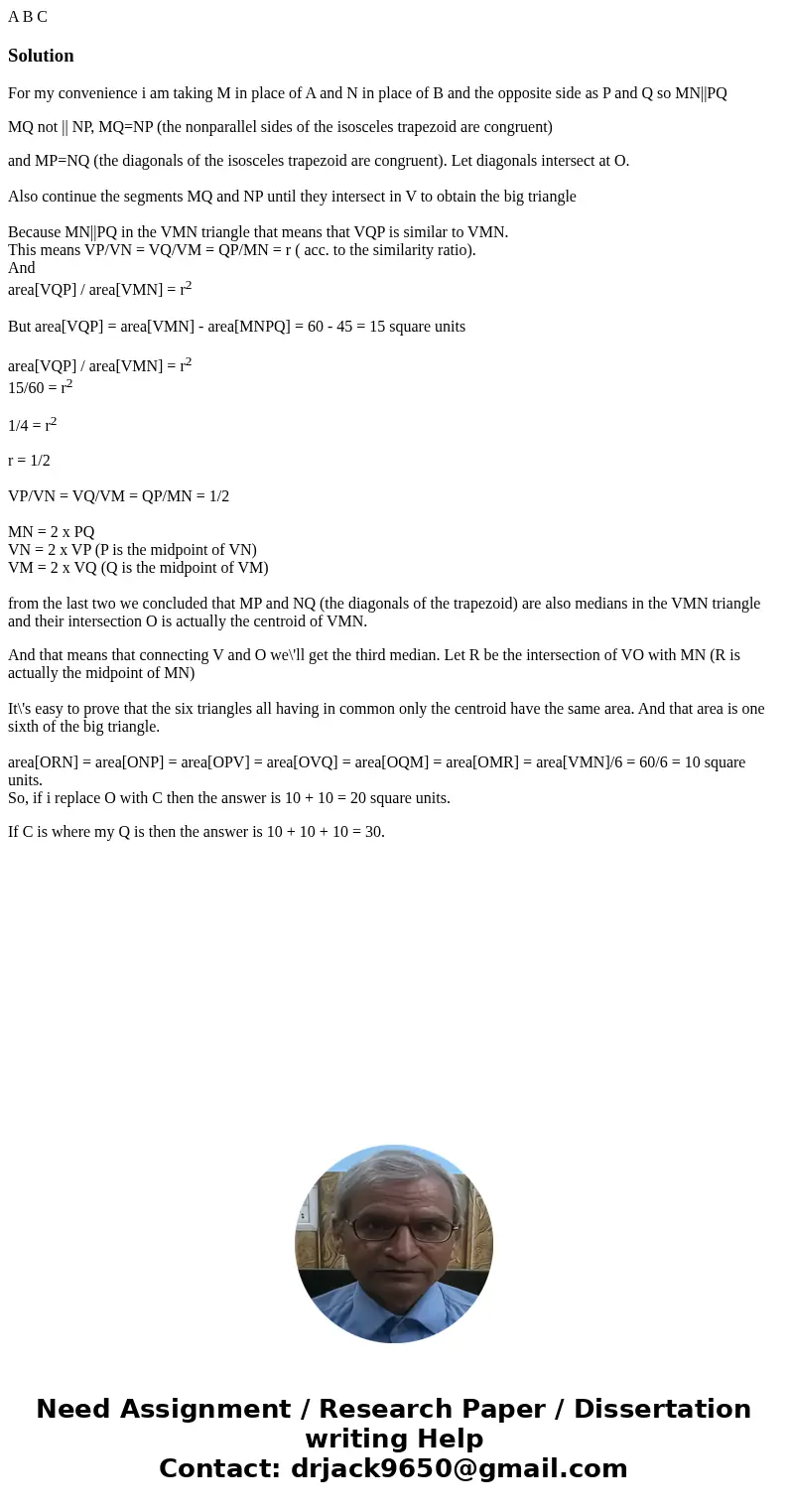A B C SolutionFor my convenience i am taking M in place of A
Solution
For my convenience i am taking M in place of A and N in place of B and the opposite side as P and Q so MN||PQ
MQ not || NP, MQ=NP (the nonparallel sides of the isosceles trapezoid are congruent)
and MP=NQ (the diagonals of the isosceles trapezoid are congruent). Let diagonals intersect at O.
Also continue the segments MQ and NP until they intersect in V to obtain the big triangle
Because MN||PQ in the VMN triangle that means that VQP is similar to VMN.
This means VP/VN = VQ/VM = QP/MN = r ( acc. to the similarity ratio).
And
area[VQP] / area[VMN] = r2
But area[VQP] = area[VMN] - area[MNPQ] = 60 - 45 = 15 square units
area[VQP] / area[VMN] = r2
15/60 = r2
1/4 = r2
r = 1/2
VP/VN = VQ/VM = QP/MN = 1/2
MN = 2 x PQ
VN = 2 x VP (P is the midpoint of VN)
VM = 2 x VQ (Q is the midpoint of VM)
from the last two we concluded that MP and NQ (the diagonals of the trapezoid) are also medians in the VMN triangle and their intersection O is actually the centroid of VMN.
And that means that connecting V and O we\'ll get the third median. Let R be the intersection of VO with MN (R is actually the midpoint of MN)
It\'s easy to prove that the six triangles all having in common only the centroid have the same area. And that area is one sixth of the big triangle.
area[ORN] = area[ONP] = area[OPV] = area[OVQ] = area[OQM] = area[OMR] = area[VMN]/6 = 60/6 = 10 square units.
So, if i replace O with C then the answer is 10 + 10 = 20 square units.
If C is where my Q is then the answer is 10 + 10 + 10 = 30.

 Homework Sourse
Homework Sourse